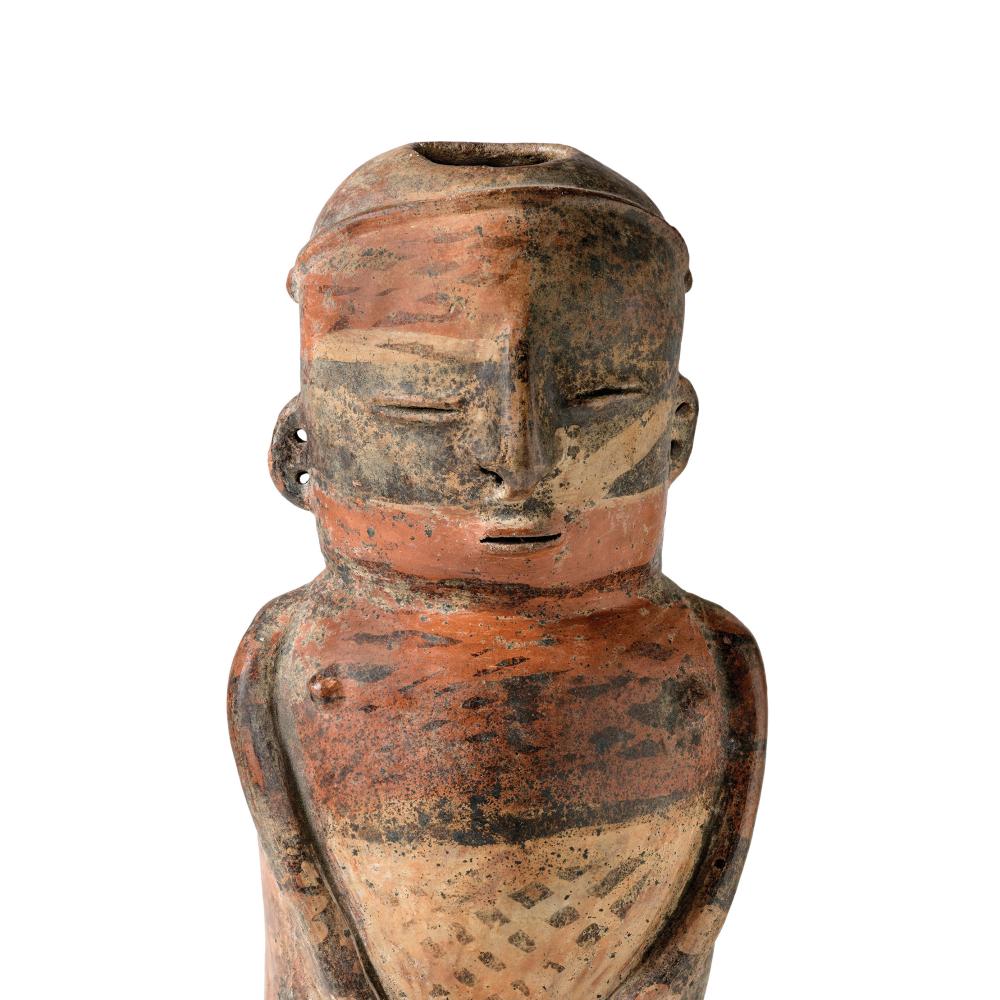This ceramic vessel was made between 700 and 1600 CE in the Middle Cauca Valley (modern-day Colombia) and used in Indigenous burial rites. Known as a pensador, or “thinker,” the piece features a male figure in a stoic pose suggesting deep contemplation. Many Indigenous Colombian cultures believe that the material world was summoned into being through thoughts of the ancestors, making the thinker a powerful spiritual icon. In the words of Rex Koontz, consulting curator for the art of the Indigenous Americas at the Museum of Fine Arts, Houston, the pensador “recalls creation and the deep thinking necessary to plumb the balance of forces necessary for a harmonious world.”
The vessel is a highlight of “The Portable Universe,” an NEH-funded exhibition on ancient Colombian art on view in Houston through April 16. Previously on display at the Los Angeles County Museum of Art (LACMA), the vast survey assembles nearly 400 pieces of ceramics, textiles, and featherworks that were created from 500 BCE to 1600 CE. It also includes never-before-exhibited works from LACMA, the custodian of this funerary vessel, and an unprecedented number of loans from the Museo del Oro in Bogotá.
In addition to providing visitors with a rich overview of major pre-Colombian societies, the show seeks to model how museums can collaborate with Indigenous leaders to better interpret and display works related to their history and practice. Curators collaborated with members of the Arhuaco community of the Sierra Nevada de Santa Marta in conceptualizing and designing the exhibition.


